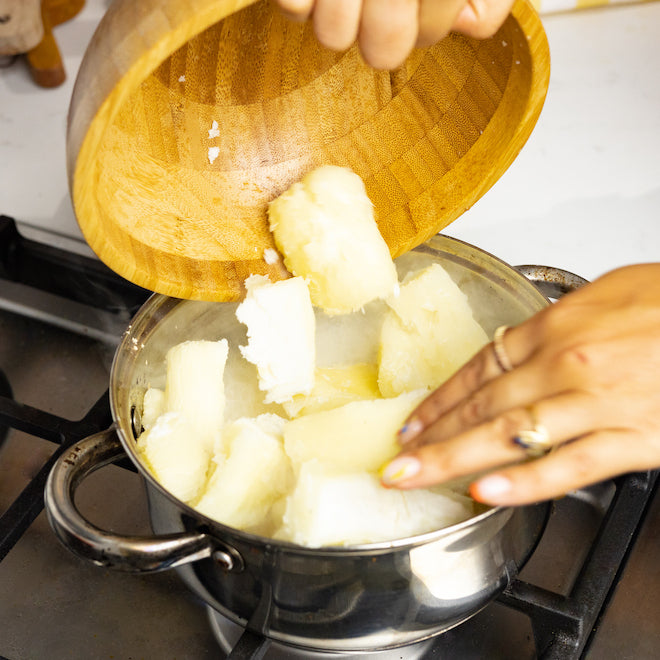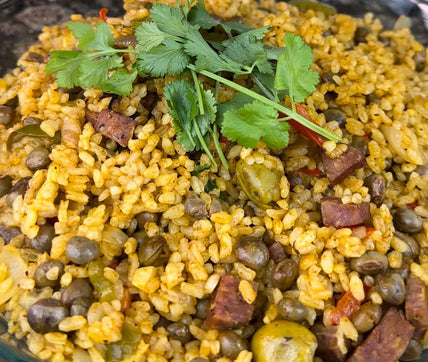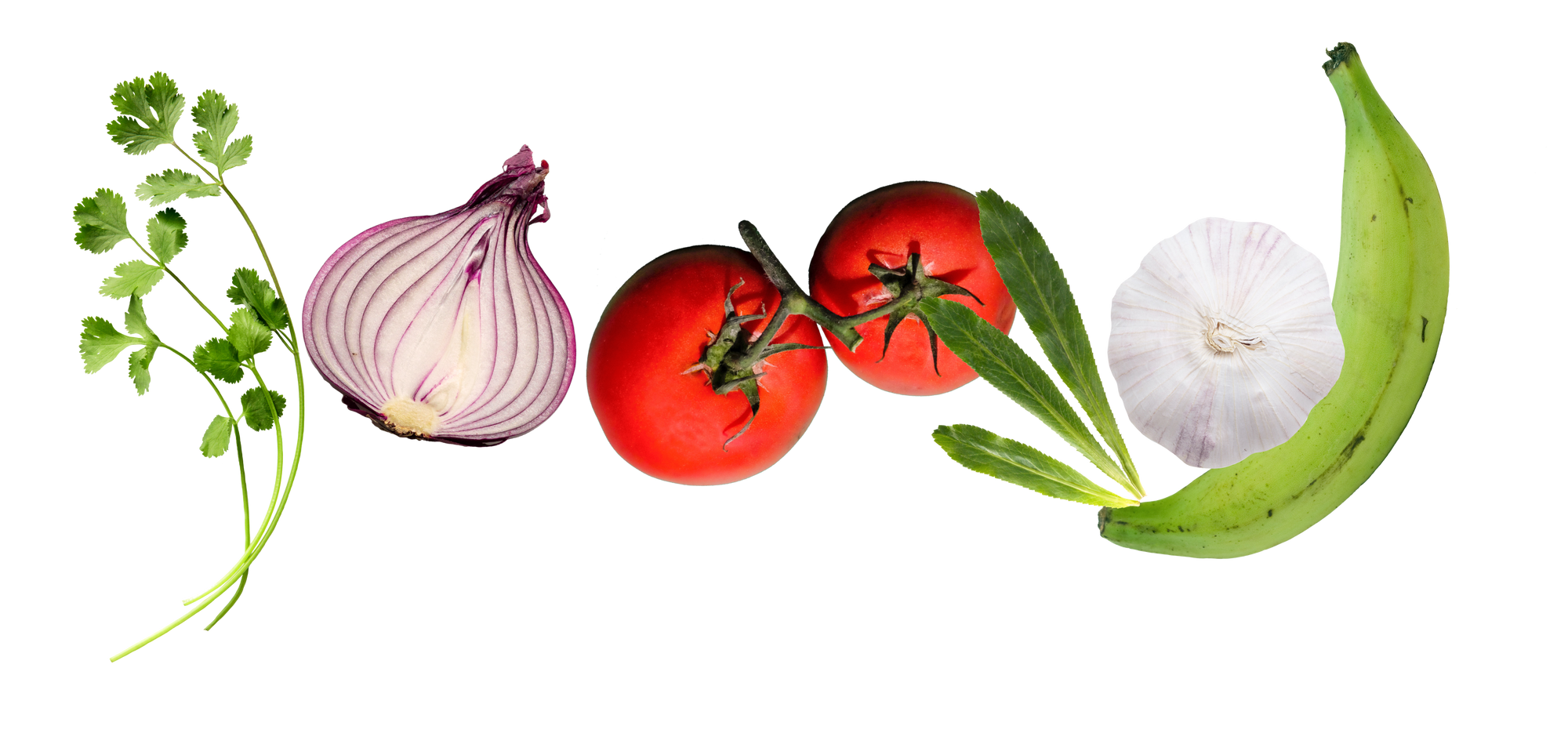
A Look at Our Roots: Yuca, Yautía, & More
By: Cybele Ramirez
Tubers (tubérculos, raíces, or víveres in Spanish), as this family of root vegetables is called, are essentials in the Latin American diet. Believe it or not, Yuca is the fourth most important staple food in the world, right under corn, rice, and wheat. (Wepa!)
Our favorite root vegetables can be enjoyed boiled, baked, or fried and paired with delicious salsas like mojo verde, hogao, or sofrito. In many countries, they’re often added to soups, beans, and stews for enhanced flavor and texture.
No matter how you eat these veggies, they offer loads of nutritional benefits and connections to ancestral cooking. So, we’re diving right into our roots with a look at five of the most commonly used tubers in Latin America!
Yuca
Also known as cassava, manioc, and Brazilian arrowroot, yuca is the most consumed root vegetable in Latin America. Its starchy flavor makes it the perfect substitute for potatoes in a mash or crispy french fries. Like many of Latin America’s staple root vegetables, you can also find yuca boiled in stews, like Sancocho, or in the aisles of your supermarket as an alternative flour.
Samantha Otero, eCornell Nutritionist, and Holistic Health and Empowerment Educator, says “This root vegetable is packed with dietary fiber and delicious complex carbohydrates to help aid in our daily digestion! This helps us maintain a healthy weight and a healthy digestive tract. A healthy digestive tract filled with balanced gut flora equals an improved and elevated mood state! Yuca also contains high amounts of Vitamin C, giving our immune system the boost it needs!”
Yautía
Popular in the Caribbean, especially in Puerto Rico and Cuba, yautía (also known as malanga) appears a lot like yuca. However, it has a “hairy” skin and an earthy taste, kind of like a nutty potato. Yautía breaks down easily when cooked, so it’s most commonly used as a thickening agent in stews. It’s easily digested and, like yuca, makes a great alternative to wheat flour.
Perhaps what’s most interesting about yautía is its variety. Yautia blanca is the kind you’ve most likely tasted in soups before but yautía morada, amarilla, and coco are also native to tropical regions of South America and the Caribbean and are often boiled and served as a side dish. Yum!
Ñame
While ñame is Spanish for yam, the yams of Latin America, especially in the Caribbean, are much different than the ones cultivated in the United States. Ñame was brought to the Caribbean from West Africa and unlike yams in the US, they appear on the outside more like yuca or yautía than a sweet potato.
A fibrous vegetable with complex carbs, ñame has rough, thin, bark-like brown skin, and starchy white flesh similar to a russet potato. They are an essential ingredient in West African and Caribbean cooking. So, while they can be somewhat hard to find at your local grocery store, they’re absolutely worth a trip to the nearest Latin market.
Batata
Batata, or Mexican camote, is a sweeter root vegetable used in Latin cooking. It’s related to the sweet potato, but it is often even sweeter. Like yuca and yautía, batata is native to Central and South America and commonly found in Caribbean Sancocho.
Batata is usually added to bean stews, fried, mashed, or (like sweet potato) used in desserts. Its versatility makes it the perfect veggie for both sweet and savory dishes. Plus, swapping out the sweet potato for batata in your next meal might just leave you feeling closer to your own roots!
Mapuey
Otherwise known as cush-cush yam or yampi root, mapuey is a mildly sweet yam with a slightly dry texture. Roots of the mapuey plant can range in color and size, from white or cream-colored to pink and purple much like other yam varieties.
Mapuey is a staple food source for many indigenous peoples in the Caribbean and Central America, where it’s a native root and has been used since ancient times. Its most common preparation style is boiled, sometimes in milk, and served alongside meat during celebratory dinners like Christmas.
A quick look at our delicious roots can really remind us of where we come from. While we’re adding yuca and mapuey from South and Central America, yautía and batata from the Caribbean, and ñame from West Africa to our traditional meals, we’re paying a small homage to the big mezcla that is Latinidad.



